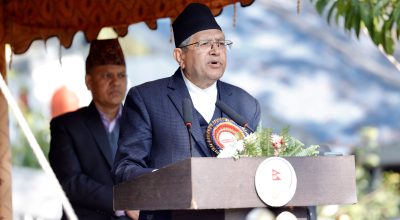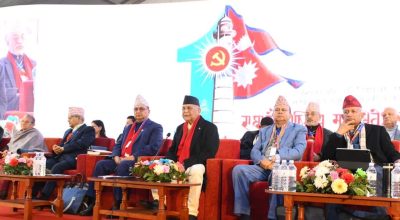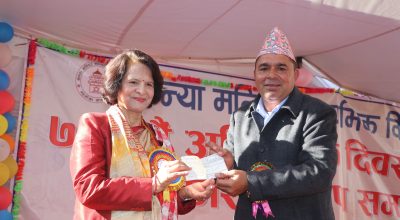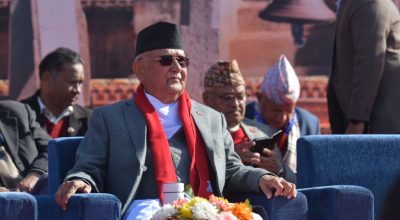
Pritam Bhattarai
Kathmandu, Dec 1: Digital platforms are found to have reported increasing number of violence against women and girls, in conflict with the constitution of Nepal that has guaranteed people’s right to a life free of violence and coercion.
According to police data, the total 4,686 cases of online violence were reported in the fiscal year, 2021/22 with 2,389 cases of VAWG alone. The figure jumped to a whopping 9,013 in the FY, 2022/23 with 4,590 VAWG cases alone.
In around five months of the current FY, 2023/24, the number of digital violence has reached 7,253 that includes 3,309 VAWG cases. If we look at the figure by separating social platforms, Facebook messenger is found to have reported most of the online violence cases with 3,956 in the FY, 2021/22, 6,782 in the FY, 2022/23, and 5,691 in the current FY. This was followed by TikTok with 233, 721, and 666 cases respectively. Similarly, WhatsApp is accounted for 96, 258, and 320 cases. Instagram reported 76, 551, and 279 while banks, organisations and institutions 127, 221, and 89.
The number may go higher as most of the female victims do not opt for reporting VAWG cases with the authorised service providers, said Mohna Ansari, former National Human Rights Commissioner. A huge 61 percent of the women victims are forced to hide their problem of violence under various circumstances, she mentioned at a discussion on combating online violence against women in politics organised here by the NDI Nepal, a non-profit organisation working to strengthen and safeguard democratic institutions, processes, norms and values to secure a better quality of life for all.
The discussion was organised as part of the 16 days of activism against violence against women, 2023 that kicked off on November 25 and will conclude on December 10 this year.
The panel discussion had sitting and former people’s representatives including Kiran Kumar Sah, President of the Women and Social Affairs Committee, Nagina Yadav, member of the parliament, former minister Ram Kumari Jhakri, former member of the parliament Amrita Thapa Magar and Ansari, who shared their accounts of violence against themselves, and suggested ways to control it.
Sharing her accounts of being subject to digital violence, former minister Jhakri said the VAWG cases are grave and increasing, prompting authorities to take action immediately. Saying even empowered people are subject to digital violence, what is the case with people in rural areas, who have no access to all sorts of the mechanisms that deal with cyber violence, she wondered.
She called for all to come together to combat this violence while suggesting that the victims themselves should come forward to seek remedies. As women are largely restricted by gender-based biasness, the parliamentary committee chair Sah said the mindset of gender-based biasness should be shunned while empowering women socially, politically and economically.
Without support, most of the women victims cannot speak up and report, Ansari asked for creating such a society that supports women in need. As the country has had required cyber laws, legal awareness and the proper implementation of laws are equally important, she said. As the participants said, there are the economic and financial costs of VAWG.
The IMF blog based on a 2022 research paper reports that an increase in violence against women by one percentage point is associated with a nine percent lower level of economic activity.
The World Bank’s Voice and Agency Report of 2014 states that the development costs of VAWG are substantial and close to average that global majority country governments spend on primary education.
According to police data, in the last one year, 16,519 cases of domestic violence and 4,394 cases of other gender-based violence were registered with the police. As data shows, 80 percent of gender-based violence in the country are found to be domestic violence. Fifty three percent of the domestic violence is physical violence and 47 percent mental. Similarly, 89 percent of women and girls are subject to violence by the people known to them.
According to World Health Organisation’s most recent estimates, launched in March 2021, almost one in three women worldwide faces physical or sexual violence in her lifetime. Most of this is in the form of intimate partner violence, which means, women are at greatest risks from people they live with. In terms of this, the South-East Asia Region ranks second highest at around 33 percent, according to the estimates. (RSS)
















